-
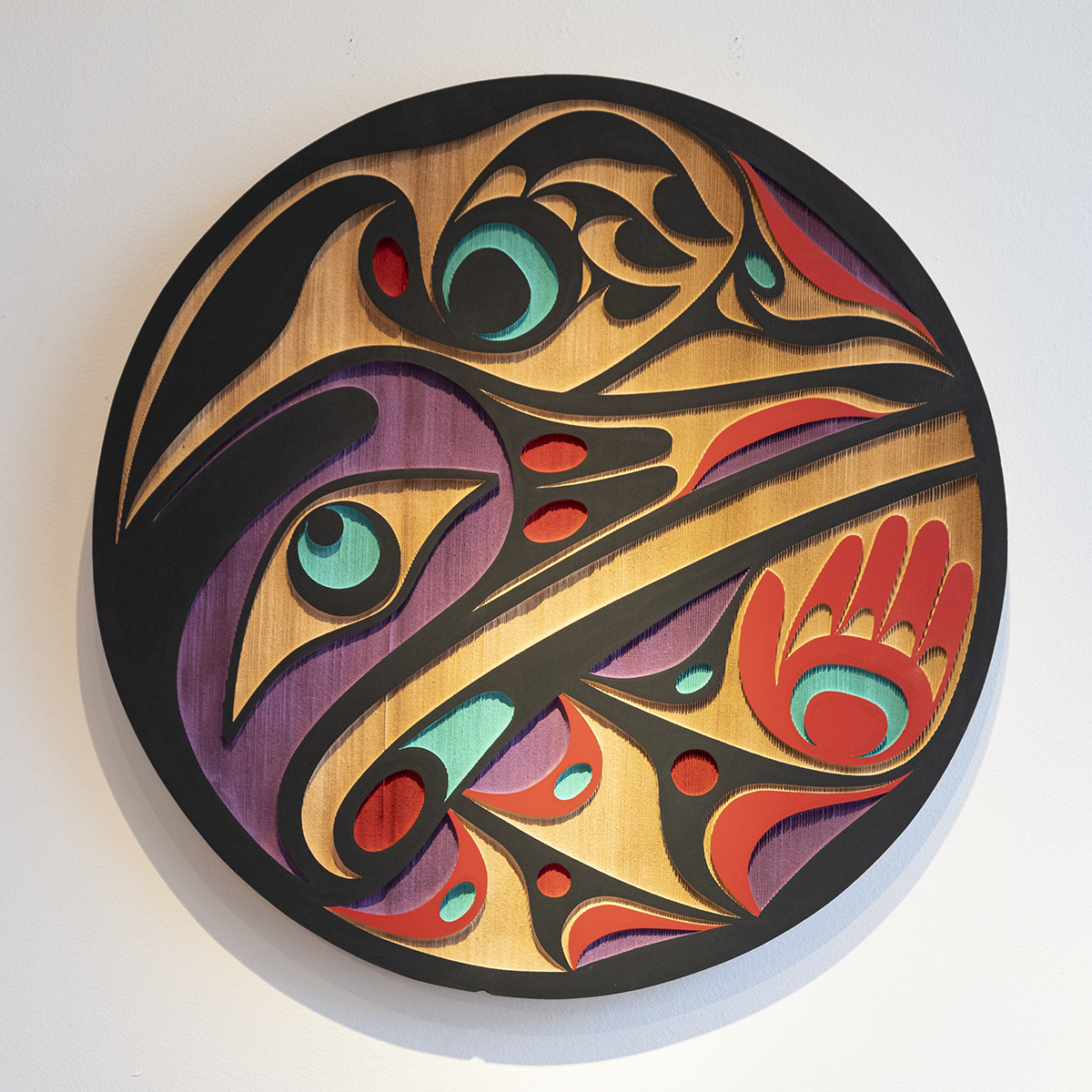 Round Hummingbird PanelRed Cedar, Acrylic
Round Hummingbird PanelRed Cedar, Acrylic- 23.38"h
- 1.38"w
- 23.38"d
SOLD -
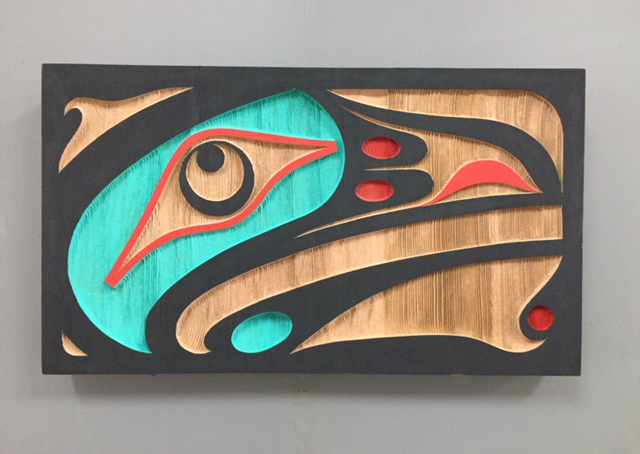 Raven Panel (Wide)Sandblasted Cedar Panel, Acrylic
Raven Panel (Wide)Sandblasted Cedar Panel, Acrylic- 10"h
- 18"w
SOLD -
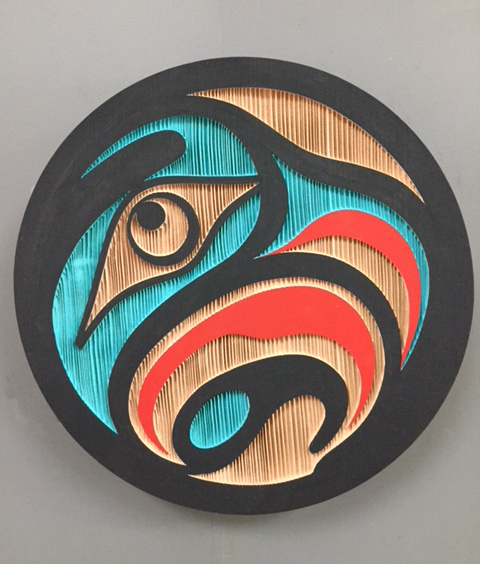 Eagle PanelSandblasted Cedar Panel, Acrylic
Eagle PanelSandblasted Cedar Panel, Acrylic- 12"h
- 12"w
SOLD -
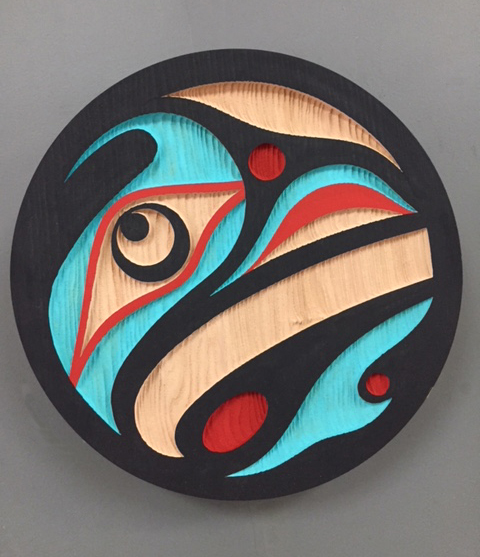 Small Round Raven PanelSandblasted Cedar, Acrylic
Small Round Raven PanelSandblasted Cedar, Acrylic- 12"h
- 12"w
SOLD -
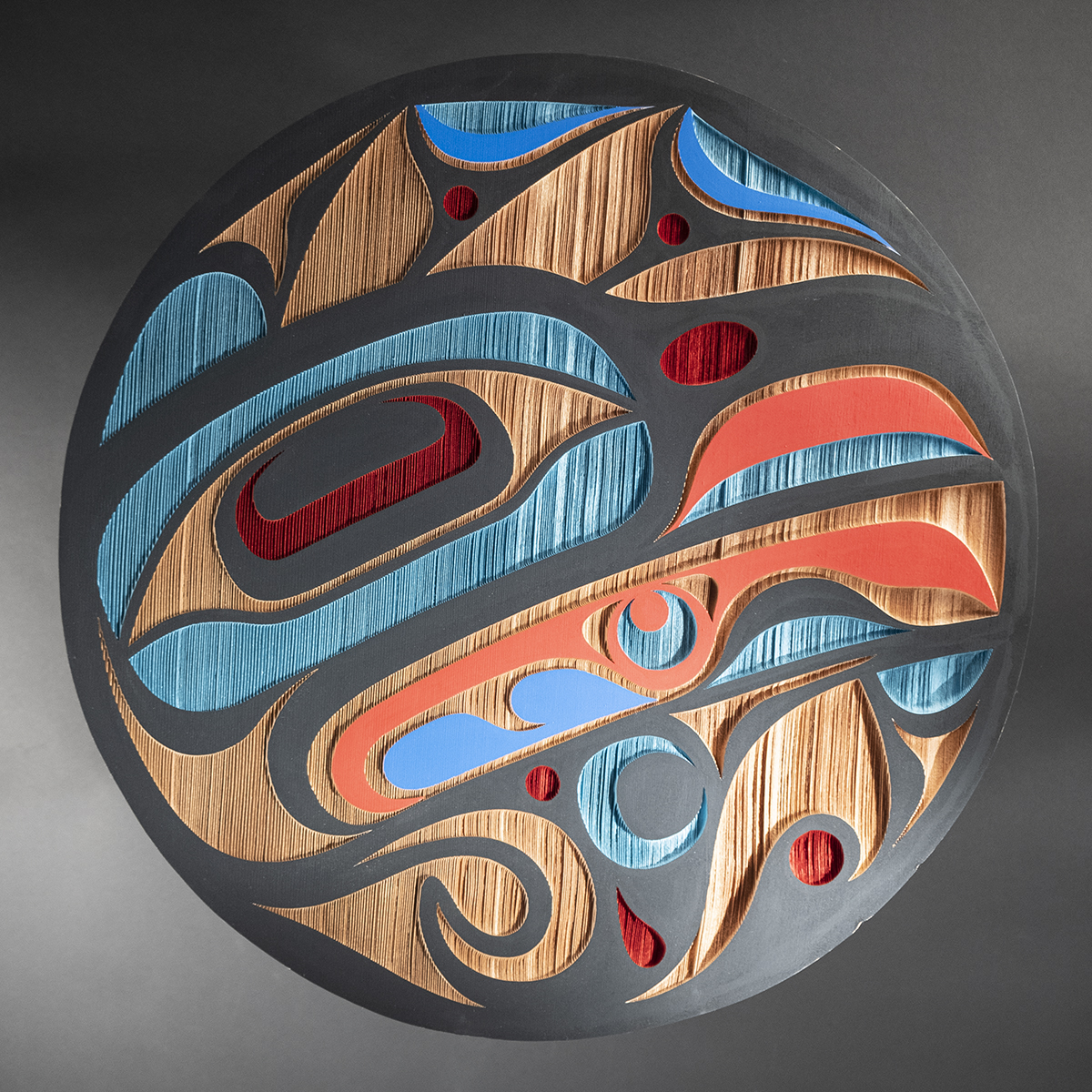 Raven PanelSandblasted Red Cedar, Acrylic
Raven PanelSandblasted Red Cedar, Acrylic- 23.38"h
- 23.38"w
- 1.38"d
SOLD -
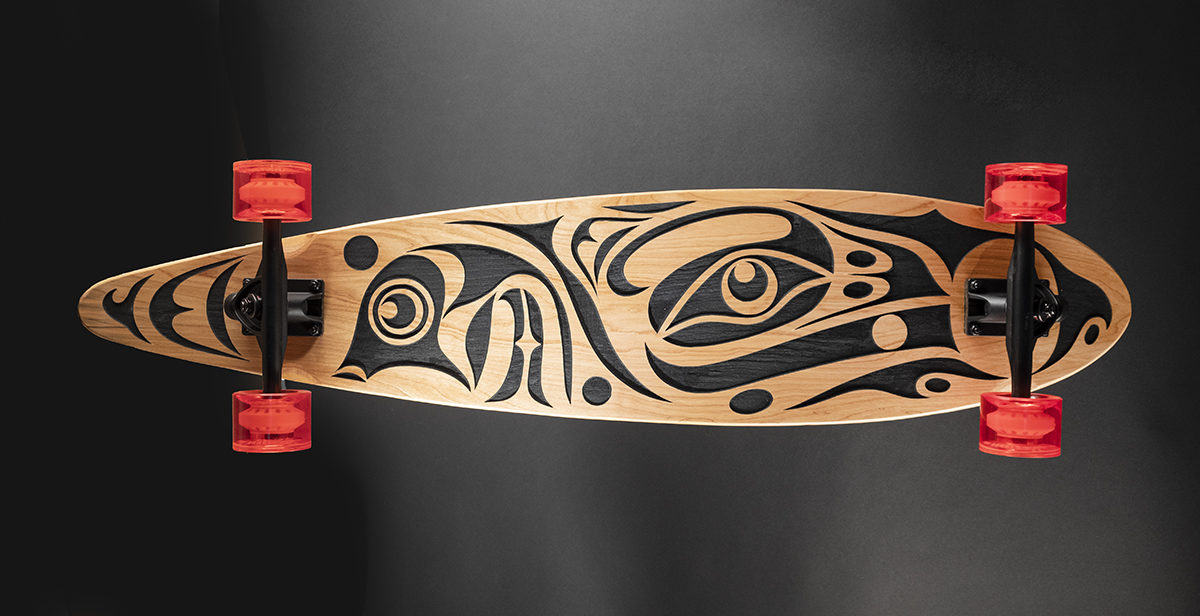 Carved & Painted LongboardSandblasted Longboard, Acrylic Paint, Wheels and TrucksSOLD
Carved & Painted LongboardSandblasted Longboard, Acrylic Paint, Wheels and TrucksSOLD -
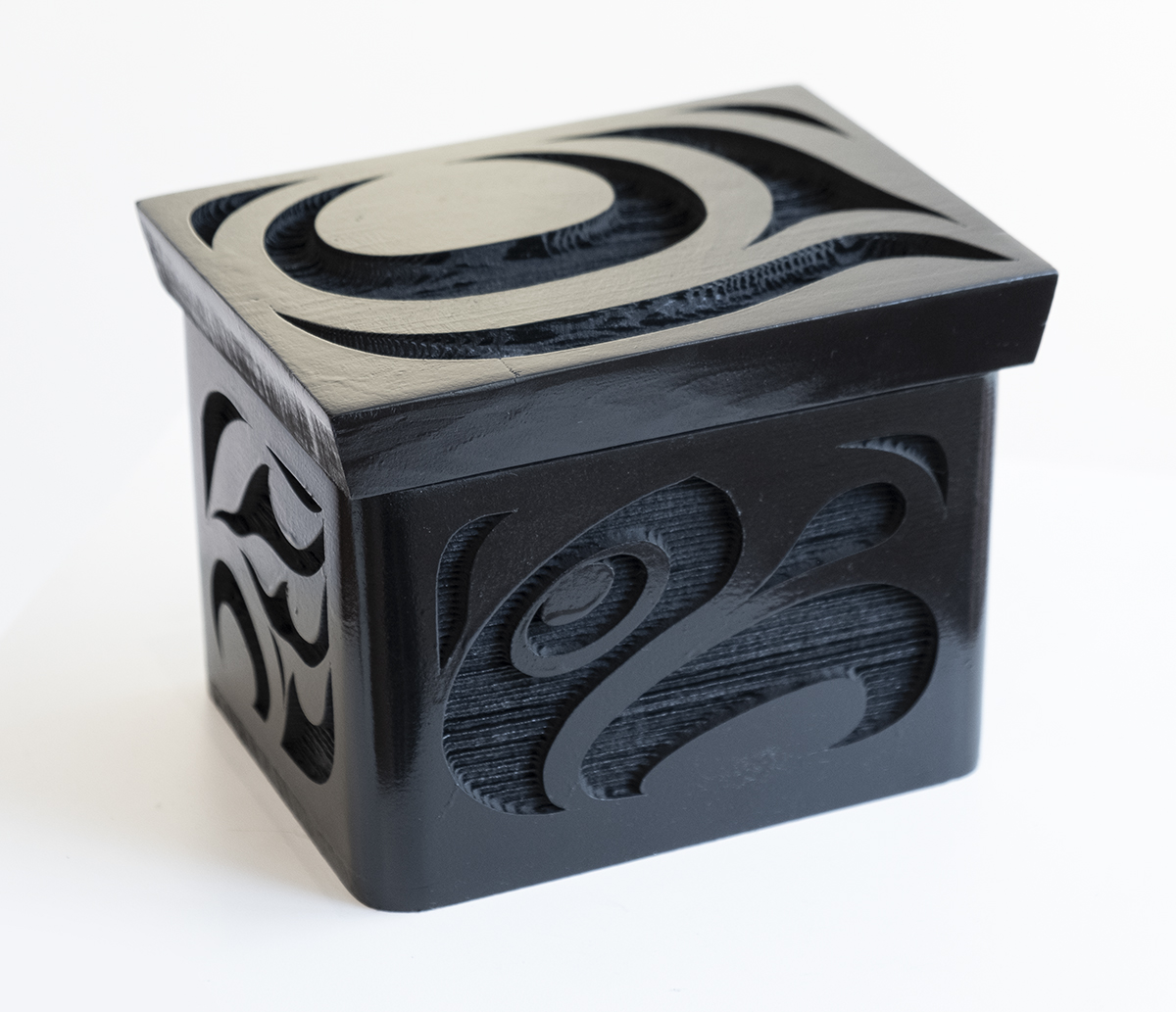 Eagle, Bear & Sockeye Bentwood BoxSandblasted Yellow Cedar, Acrylic
Eagle, Bear & Sockeye Bentwood BoxSandblasted Yellow Cedar, Acrylic- 5.75"h
- 7.75"w
- 5.88"d
SOLD -
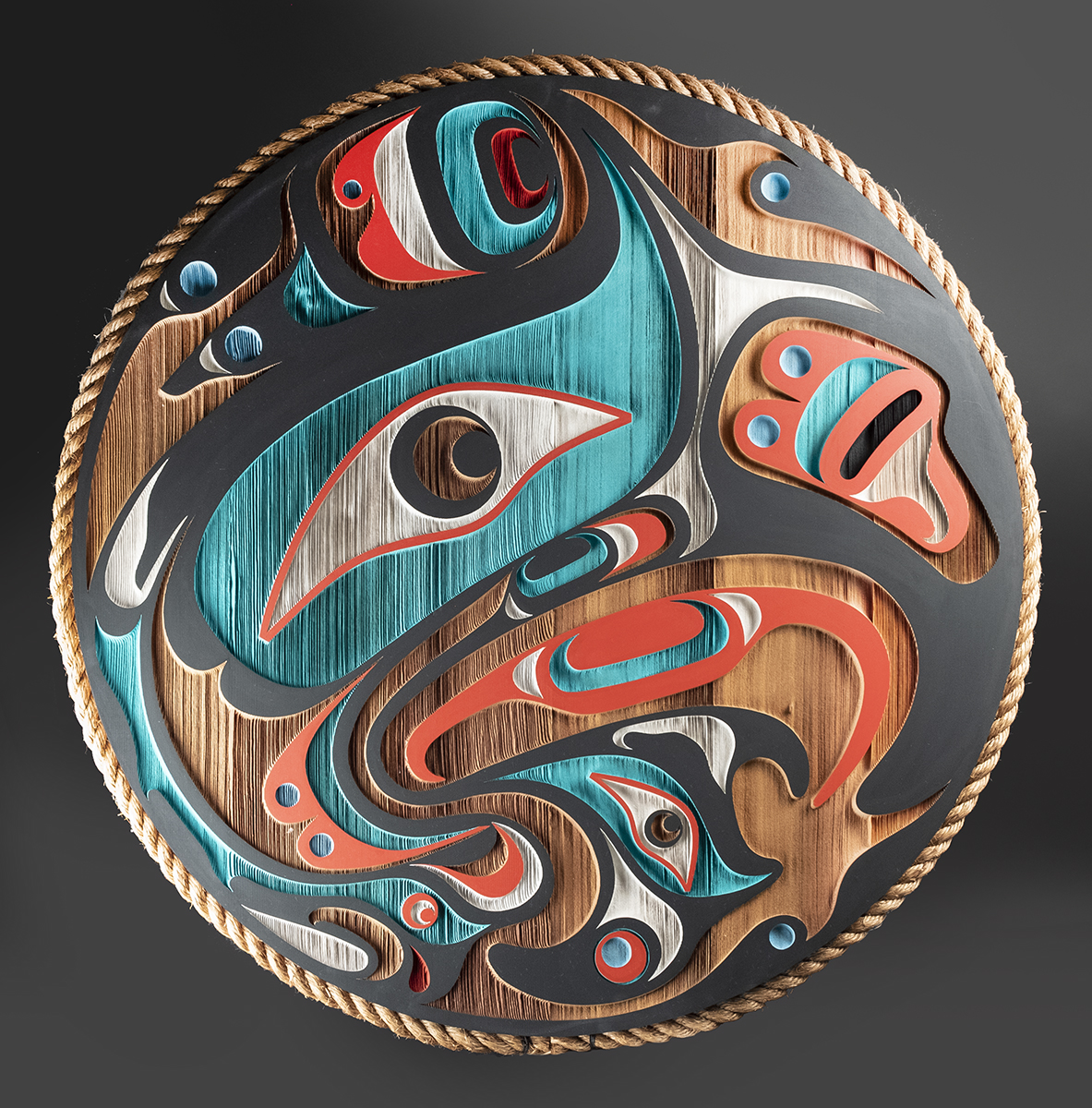 Kwakiutl Eagle PanelSandblasted Cedar, Rope, Acrylic
Kwakiutl Eagle PanelSandblasted Cedar, Rope, Acrylic- 37"h
- 37"w
- 4"d
SOLD -
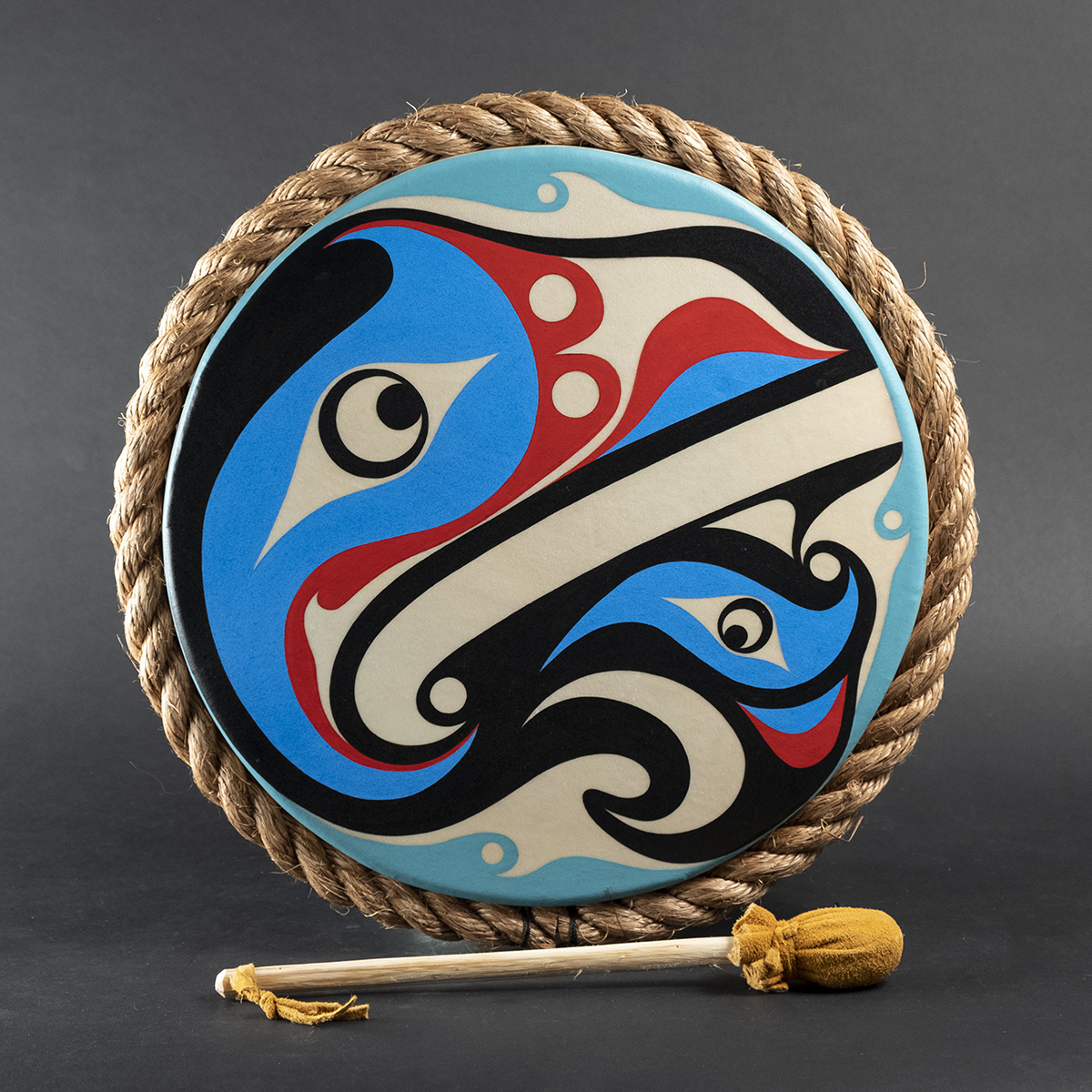 Raven DrumPainted Stretched Hide, Wooden Frame, Rope, Beater
Raven DrumPainted Stretched Hide, Wooden Frame, Rope, Beater- 16"h
- 16"w
- 3"d
SOLD -
 Kwagiulth Killerwhale PanelSandblasted Cedar, Acrylic
Kwagiulth Killerwhale PanelSandblasted Cedar, Acrylic- 35.88"h
- 35.88"w
- 1.88"d
SOLD -
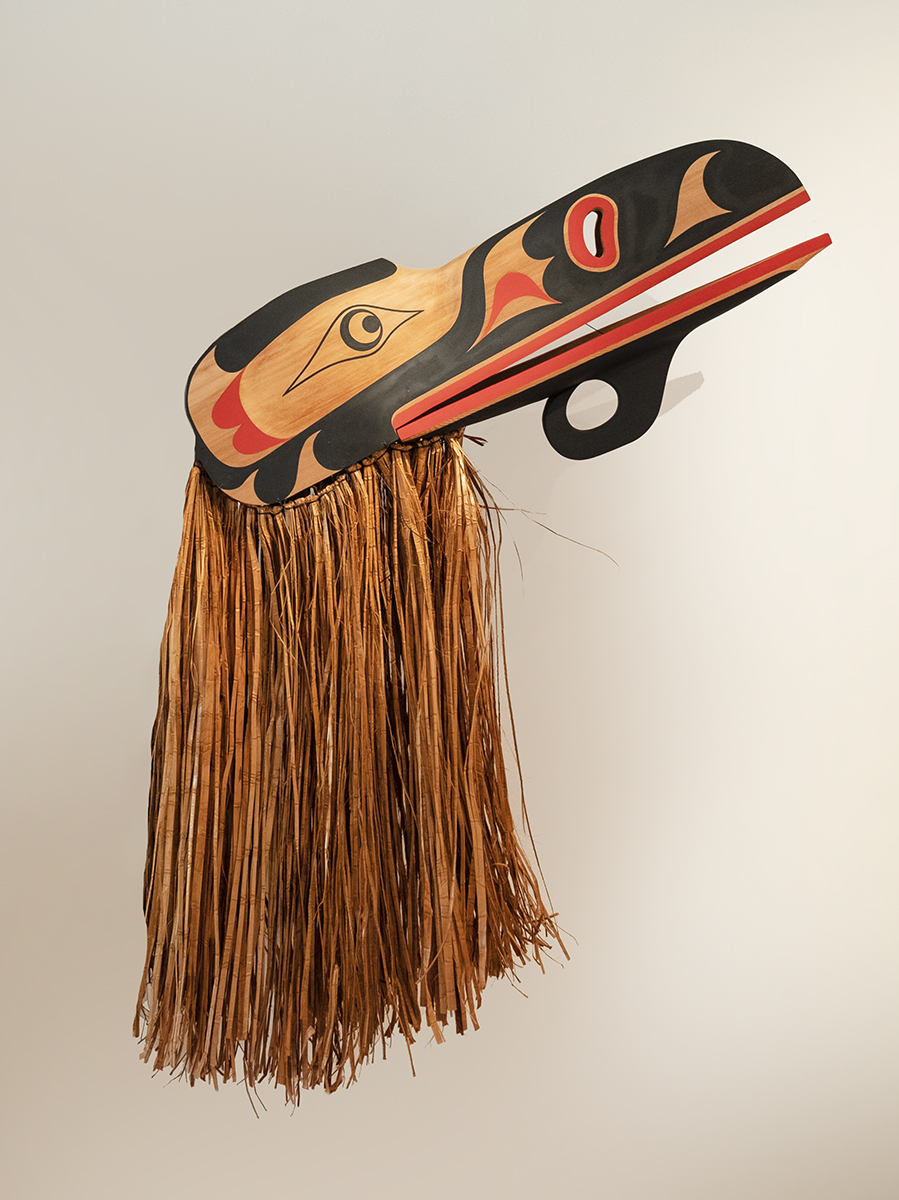 Raven MaskCedar, Cedar Bark, Acrylic
Raven MaskCedar, Cedar Bark, Acrylic- 15"h
- 37"w
- 9.75"d
SOLD -
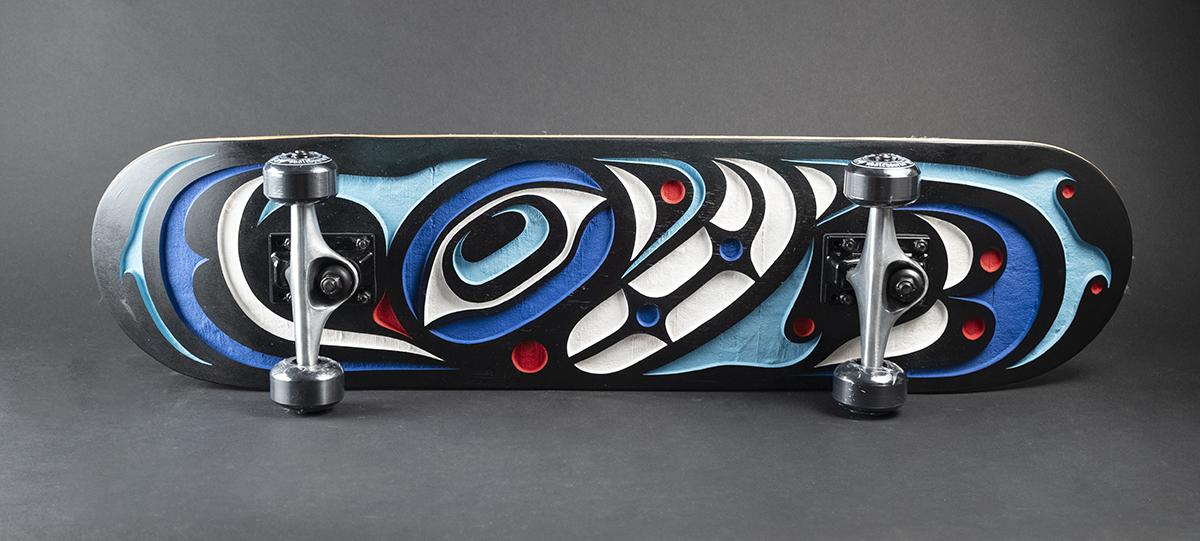 Formline SkateboardSandblasted Shortboard with Trucks
Formline SkateboardSandblasted Shortboard with Trucks- 8"h
- 32"w
- 5.13"d
SOLD -
 Kwagiulth Raven – SkateboardSandblasted and Painted Longboard
Kwagiulth Raven – SkateboardSandblasted and Painted Longboard- 9"h
- 43"w
- .5"d
SOLD -
 Baby Raven MaskRed Cedar, Acrylic, Cedar Bark, Abalone
Baby Raven MaskRed Cedar, Acrylic, Cedar Bark, Abalone- 29"h
- 29"w
- 10"d
SOLD -
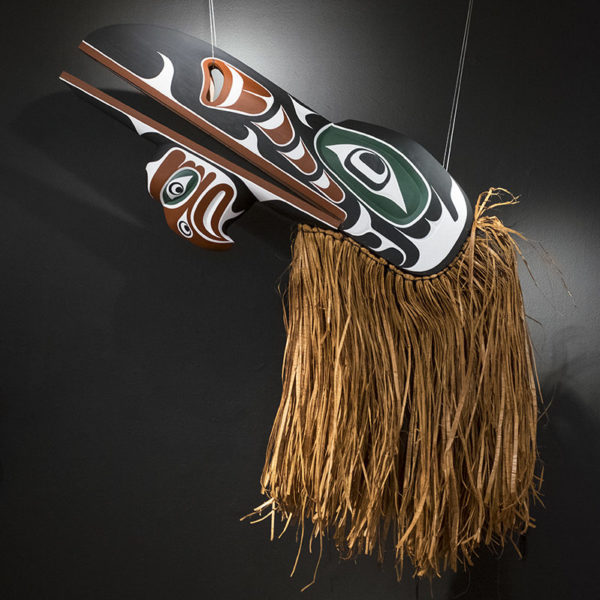 Raven MaskRed Cedar, Red Cedar Bark, Acrylic Paint
Raven MaskRed Cedar, Red Cedar Bark, Acrylic Paint- 39"h
- 43"w
- 10"d
SOLD -
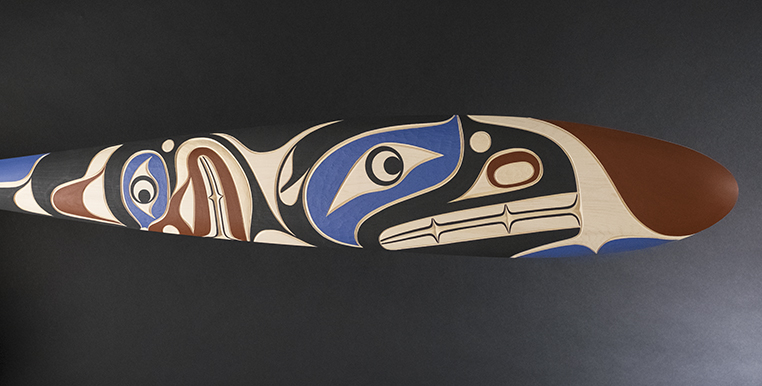 Kwagiulth Raven PaddleCarved and Painted Yellow Cedar, Painted on Back
Kwagiulth Raven PaddleCarved and Painted Yellow Cedar, Painted on Back- 6"h
- 63"w
- 1.5"d
SOLD -
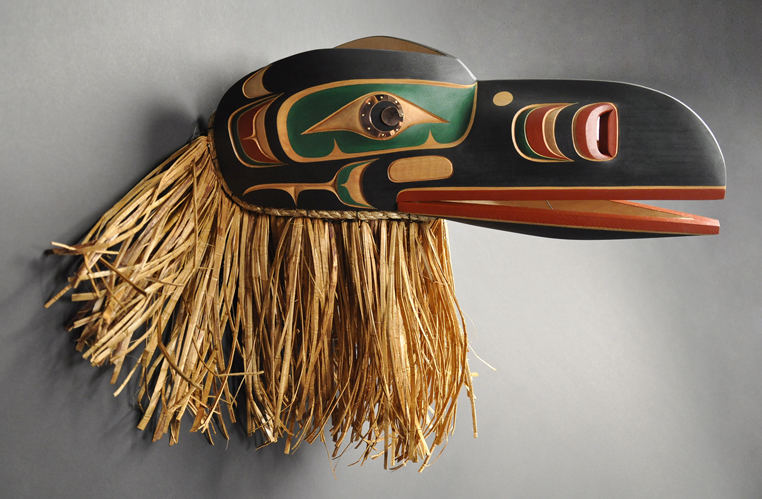 Sea Raven MaskRed Cedar, Acrylic,
Sea Raven MaskRed Cedar, Acrylic,
Cedar Bark, Copper- 22"h
- 34"w
- 24"d
SOLD
Trevor Hunt was born March 9, 1975. He is part of the great Hunt family of Fort Rupert on Vancouver Island in British Columbia, Canada. He comes from a long line of hereditary carvers and artists that have been instrumental in the survival of the Kwakiutl art form on the Northwest Coast. His father is Stan Hunt, his grandfather was Henry Hunt and his great-grandfather was Mungo Martin.
He has been painting original graphic interpretations of Kwakiutl myths and stories for fourteen years and two years ago started carving wood under the tutelage of his father Stan and his brother Jason. His others teachers include Tim Alfred and David Knox.
He was part of a group–which included his brother Jason, and cousins, Mervyn Child, and Calvin Hunt–that carved a massive 52 ft totem pole. He recently completed a thirty-eight foot painting of a Killerwhale on the roof of a resort in Telegraph, B.C. and designed the logo for the Thunderbird Shopping Plaza in Port Hardy, B.C. In 1994 he was chosen to be published after a nationwide search for young artists. In 1995 he designed the logo for Kwaguʼł District Counsel.
Trevor currently lives in Fort Rupert, the traditional home of the Kwakiutl people, with his wife and children. He continues to study the Kwakiutl art form.
Stonington Gallery speaks with Trevor Hunt about process:
When I make my art I listen to Tupac every day, from sanding with headphones, to the Bluetooth in my shop.
My favourite knifes to use is the first straight knife I ever received from my father , as well as a planing knife I received from my uncle, Tony Sr. When I create pieces with my sandblaster it has no difference to me whether it’s being blasted or hand carved , all the pieces deserve the same amount of love, respect, time and patience as the other.
I started using sandblasting through John Livingston over three years ago; he showed me everything I needed to know, and I listened closely to his words. Today, I make the pieces from beginning to end myself. From the mill to my home, to planning and laminating the panels, to rounding and sanding. Then, wrapping in rubber, designing, cutting out, right down to the sandblasting. It’s a long, rewarding process to be able to do this at my home, in my yard, at my shop.
Nothing leaves my shop until I am completely happy with the piece. They are all my children that I am releasing into the world , to tell whatever story the person sees through their eyes. I believe our art has a history to tell in each piece, but to those not familiar with that, each piece speaks to them in a different way.
When I paint, I enjoy using a little brighter than average colours, as I enjoy making relatable, peaceful pieces. I hope my pieces spread joy on the walls of the people who desire to collect them.
Doing what you love for a living is the greatest gift I could have ever wished to inherit from my past family members.
The creative process that flows through my veins, are strong with Kwakiutl form lines. I enjoy carving the poles the most I think: it’s pure pleasure to walk outside my shop, round a log, and begin to shape this old red cedar log into a treasured piece in someone’s house or condo.It’s a lot of work being an artist, and that’s what I like about it: that it’s a lot of work.
The Hunt Family gained international recognition through its oldest member, George Hunt. George was born in 1854 at Fort Rupert, British Columbia, the second of eleven children of Robert Hunt, a Hudson’s Bay Company fur trader from Dorset, England, and Mary Ebbetts (Ansnaq) (1823-1919), a member of the Raven clan of the Taantakwáan tribe of the Tlingit nation. Years later, George became a consultant to the American anthropologist Franz Boas with whom he collected hundreds of Kwakiutl artifacts for an exhibit at the 1893 World’s Columbian Exposition in Chicago. George was considered a linguist and ethnologist in his own right. Through marriage and adoption he became an expert on the traditions of the Kwakwaka’wakw of coastal British Columbia. During his lifetime, George wrote thousands of pages of description of Kwakiutl culture over the next decades. Today, the Hunt family comprises of a large number of internationally acclaimed artists.
A note on spelling: The spelling of the Hunt family’s tribal affiliation has changed throughout the decades, and continues to evolve. It is spelled variously: Kwakiutl, Kwagiulth, Kwaguilth, Kwagulth, and Kwaguł. Out of respect for each artist’s preference, each of Jason and Trevor’s preferred spellings are used in reference to their tribal affiliation. Learn more about their heritage here: http://www.kwakiutl.bc.ca/Our-Land
